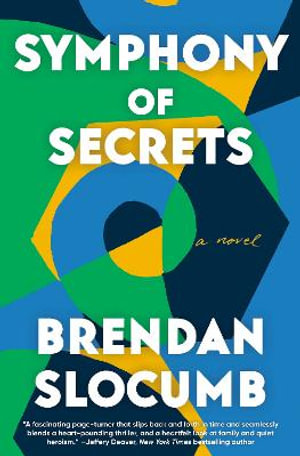Book Reviews With Jenny Dowell

Jenny is an avid reader and vocal supporter of libraries. Her reviews are always thought-provoking and well constructed. A link to reserve each book appears at the end of her review. You can receive Jenny's reviews and other exciting news every month in our library eNewsletter by subscribing at the following link www.rtrl.nsw.gov.au/subscribe.
April 2024
Women and Children
by Tony Birch
 Have you ever finished a novel and just sat, running your hand over the cover of the closed book, pondering what you've experienced? Women and Children is one of those rare books for me.
Have you ever finished a novel and just sat, running your hand over the cover of the closed book, pondering what you've experienced? Women and Children is one of those rare books for me.
This hardback beautiful book has end papers covered in small white women's handbags with a top clasp and two short straps, the style used by women in the 1960s. On its cover is a photo of a young girl in a communion veil and a woman standing beside her holding a handbag of the same shape and style. In the author notes, we read that the photo is of the author's sister and aunt and was taken by his mother.
Women and Children is not autobiographical but the stories that inspired it are embedded in Birch's experiences and explorations of not accepting silence. Tony Birch is an Aboriginal Australian author, academic, and activist. He left school at 15 and went to Melbourne university aged 30 where he won the Chancellor's medal for his Arts PhD. In 2017, he became the first Indigenous writer to win the Patrick White Award. He became the Chair in Australian Literature at the University of Melbourne in December 2022. This is his fifth novel, the previous one being the highly acclaimed, The White Girl.
Women and Children is set in 1965 in a poor, inner suburb of Melbourne, possibly Fitzroy where Birch grew up. The main character is 11 year old Joe Cluny who lives with his older sister Ruby and their single mum, Marion. Joe has a close relationship with his retired street sweeper grandfather Charlie (Char) who collects and sells unwanted goods with his mate Rhanji. Joe's aunt Oona lives nearby with her partner Ray.
School life is hard for Joe who is regularly compared to his bright sister by the often cruel nuns. Home life is severely shaken when aunt Oona arrives badly beaten. Ray is a con man with close contacts with the police so justice through police channels is not available.
There is a subtle reference to the stolen generations as Char and Rhanji talk about their relationships with their father. Early in the story Joe finds a gun and there is a hint that it may be used to enact a different form of justice.
The closeness of the relationship between Joe and his grandfather, between Char and Rhanji, and between the sisters Marion and Oona plus the bravery of them all, are key themes in this novel.
Every character in this beautiful story is well imagined and tangible. Their interactions and dialogue ring true. Birch has been awarded numerous literary prizes for his perceptive stories of family life. This book is on the top of the pile and deserves to be widely read and acclaimed.
I hope it touches you as much as it touched me.
One of the best books I've read in years.
5/5
March 2024
Australia's Trail-blazing First Novelist—John Lang
by Sean Doyle
 Have you heard of John Lang, Australia's first novelist? I hadn't and I assume you haven't either.
Have you heard of John Lang, Australia's first novelist? I hadn't and I assume you haven't either.
There is a short listing for John Lang in Wikipedia, and a little more detail in ANU's Australian Dictionary of Biography with these words describing Lang as having 'human failings, a wide intellect, remarkable memory, and sparkling wit'. It concludes 'Through narrow social sanction Australia lost one of its most brilliant sons and its first native-born novelist.'
Author (and local) Sean Doyle, having spent many years as an English language teacher, travel journalist, and editor—plus his extensive travels in India—is an ideal biographer of John Lang.
Peter FitzSimons provides this quote on the cover, 'What a life! What a story! Superbly researched and wonderfully crafted'.
The blurb on the back of the book summarises Lang a 'writer, journalist, barrister, larrikin', as TV news might say today, 'a colourful character'.
Lang was born in humble circumstances in Parramatta in 1816 and wrote the first detective novel—a convict romance—in English at the age of 19. For various reasons, the novel was published under his own name, adding to the lack of our knowledge of him. Later he wrote the first Indian travelogue. He was also the first Australian to publish a newspaper overseas (well before Rupert Murdoch) at age 28.
There are some explanations for the lack of knowledge about this enigmatic man, but I won't reveal them here. Suffice to say that he loved the limelight but sometimes that limelight was hot enough to burn him and his reputation.
It is little surprise that from time to time he took to the stage, and like many of the present day celebrity men in the law, he loved oratory, verbal jousting, and taking on powerful entities in the court room.
Doyle explores why we haven't heard of this man. He does so in an engaging style, combining primary sources with historical background material and a flowing style that makes the book highly readable. Clearly Doyle's experience and deep connection with India makes the complexity of Lang's years on the subcontinent during the rise and fall of the East India Company (in which he played a part) and the influence of the British Raj, richer and more satisfying reading.
The book also explores Lang's family life including his 'three fathers', two marriages, and his six years in London. Although he talked of returning to Sydney, he died in India at the age of 47.
The book is chaptered in chronological order with a clear table of contents, concluding with an epilogue, a very helpful 'timeline by age', a list of Lang's writings, endnotes, and sources. This book should be read by anyone interested in early Australian authors, but anyone who enjoys a good biography will find this a fascinating read.
Sean Doyle fills out the short but event-filled life of our first novelist with great skill and detail. I imagine Lang would have proudly embraced this book, despite it not always being flattering to its subject.
I could not agree more with Peter FitzSimons 'What a story!'
Highly recommended.
5/5
February 2024
Symphony of Secrets
by Brendan Slocumb
 This is a wonderful novel for musicians and those of us who know nothing about music except that we enjoy it. An historical novel set in New York in both the early decades of the 1900s and present day, Symphony of Secrets is a musical mystery. Like his main character, Bern Hendricks, author Brendan Slocumb is a current-day music academic.
This is a wonderful novel for musicians and those of us who know nothing about music except that we enjoy it. An historical novel set in New York in both the early decades of the 1900s and present day, Symphony of Secrets is a musical mystery. Like his main character, Bern Hendricks, author Brendan Slocumb is a current-day music academic.
In this novel, Professor Hendricks is commissioned by the Frederick Delaney Foundation to orchestrate a newly discovered work by Delaney who was a prolific composer 100 years ago. Delaney had written musical pieces related to the colours of the Olympic rings but Red is missing.
Rough sleeper Josephine Reed is neurodivergent, experiencing sounds as notes and transcribing what she hears in doodles. She also remembers every tune she's ever heard and can compose new pieces without having any training in musical notations. It is the early 1900s and Frederick Delaney—once known as the struggling Freddy Delaney—is suddenly the most popular composer in the country. The pair link up and Delaney convinces Reed that as a black woman, she can never be recognised and published, so he passes her work off as his own—he is a lyricist and transcribes the notations into a conventional musical score. She, meanwhile, is happy sleeping on his floor, cooking for him and listening to music.
In those days, music lovers bought sheet music and the pianists, such as Delaney, played in local department stores and made money from those appearances and the sale of their musical scores. A century later, Music Professor Bern Hendricks is hired by the Delaney Foundation to bring the long lost and recently discovered Delaney composition, Red Opera to the stage. Black Cybersecurity IT whiz Eboni Washington is his modern-day collaborator and mystery solver.
This is a novel exploring the issues of the early 1900s in USA, especially segregation and white supremacy. Musicians will more fully understand the musical references, but I can attest that having no musical knowledge is no impediment to being absorbed by this intriguing novel. The story is gripping and starts with Delaney going through his pre-performance routine of filling two champagne glasses and honouring a photo of an unnamed 'kiddo'.
The novel, like an opera, is in acts with alternating movements featuring Bern Hendricks and Freddy Delaney with occasional movements or chapters focusing on Josephine Reed. This story is also a plea to broaden our gaze to the people on the fringe—those who look, act, sound, or think differently. The musical term scherzo is used to represent Josephine as a sideline or interlude. Finally in Act 4, Josephine Reed is given the focus she deserves. She is no longer the scherzo, but this extraordinary woman becomes the centre of the music where she should always have been.
I found this book to be riveting in its evocative recreation of the era and an insight into the musical world of which I know so little.
I think you will enjoy it too.
5/5
You can download Jenny's 2023 reviews, 2022 reviews, 2021 reviews, 2020 reviews, 2019 reviews, and her 2018 reviews.